#MathHistory
Text
"A fool is known by his speech, and a wise man by silence."
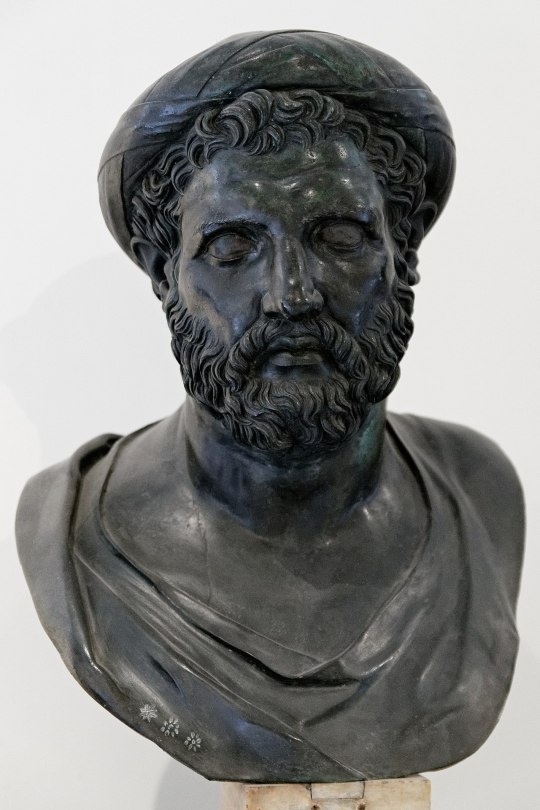
Pythagoras, a Greek mathematician and philosopher, lived around 570-495 BCE. While much of his life is shrouded in mystery and legend, here are five lesser-known or potentially rare facts about Pythagoras:
Secretive Cult-Like Community: Pythagoras founded a secretive and exclusive community in Croton, Italy, known as the Pythagorean Brotherhood. The members of this community were bound by strict rules, including a vow of silence and a communal way of life. The group was not only interested in mathematics but also philosophy, mysticism, and religious practices.
Numerical Mysticism: Pythagoras and his followers believed in the mystical significance of numbers. They thought that numbers held inherent qualities and mystical properties. For example, they associated odd numbers with masculinity and even numbers with femininity. The number 10 was particularly significant and seen as a perfect and divine number.
Pythagorean Theorem was known before Pythagoras: While Pythagoras is credited with the famous Pythagorean Theorem, which relates the lengths of the sides of a right-angled triangle, evidence suggests that the theorem was known to the Babylonians and Indians before Pythagoras. Pythagoras, however, is often credited with its formal proof and popularization in ancient Greece.
Vegetarianism and Taboos: Pythagoras and his followers were known for their strict dietary restrictions. They practiced vegetarianism, believing that it was essential for purifying the soul. They also had various food-related taboos, such as avoiding beans, possibly due to their belief in the impurity associated with certain legumes.
Pythagorean Cup: Pythagoras is associated with the invention of the Pythagorean cup, also known as a "greedy cup" or "tantalus cup." It's a clever drinking vessel with a hidden mechanism that causes the cup to drain its contents if filled beyond a certain level. This invention is often attributed to Pythagoras as a symbolic lesson in moderation and self-control.
#Pythagoras#Mathematics#Philosopher#PythagoreanTheorem#MathHistory#GreekPhilosopher#Numerology#Mysticism#Mathematician#PythagoreanBrotherhood#AncientGreece#NumberTheory#MathEducation#Geometry#PythagoreanCup#MathTrivia#MathematicalPioneer#HistoricalFigures#MathLover#WisdomofPythagoras#quoteoftheday#today on tumblr
18 notes
·
View notes
Photo

Did You Know?
Symbols for zero were invented independently in Mesopotamia c.3oo BCE and by the Mayans c.400 CE. It was first used in mathematical calculations in India in c.700 CE. But, zero did not reach Europe until the 1100s CE.
#sciencefacts #mathfacts #zero #mathhistory
0 notes
Photo

Hello, folks! Today is National Pi Day. “Pi” is the ratio of the circumference of a circle to its diameter, which always comes out to 3.14 That having been said, since we’re a Coast Artillery page, we thought of something nifty for you – here are the circumferences of the calibers of Coast Artillery guns used from the 1890’s through World War 2. These are the physical diameters of the bore of the gun, and also the width of the shell. For our new followers, yes – we really had guns protecting our coasts that fired projectiles more than a foot wide, and which weighed more than one ton! Even better, we were using them over 125 years ago, and they were fired with pinpoint accuracy, without calculators, computers, or radar. For your reference, we have added photos of an example of each caliber, as well, with the caliber on top, and the circumference on the bottom. From a local connection to Fort Hancock, each type was emplaced here at Sandy Hook, or tested at the Sandy Hook Proving Ground, or emplaced nearby :) Enjoy! 🇺🇲🇺🇲 ** Please Like & Follow "Sandy Hook History" on Facebook & Instagram for more amazing maritime and military histories of the Garden State and New York Harbor as well as a review of the 80th Anniversary of the Battle Of The Atlantic and World War 2** 🇺🇲🇺🇲 #visitmonmouth #newjerseybuzz #thejournalnj #locallivingnj #journeythroughjersey #centraljerseyexists #discovernj #yesnj #newjerseyhistory #newjerseyforyou #sandyhookbeach #sandyhooknj #sandyhookhistory #forthancockhistory #forthancock #battleoftheatlantic #piday #piday2023 #nationalpiday #historyforkids #historyisfun #historyiscool #vintagestem #stemforkids #stemhistory #mathhistory #knowledgeispower #knowingishalfthebattle #3point14 #neverstoplearningandgrowing (at Fort Hancock, New Jersey) https://www.instagram.com/p/Cpxqf-uALFo/?igshid=NGJjMDIxMWI=
#visitmonmouth#newjerseybuzz#thejournalnj#locallivingnj#journeythroughjersey#centraljerseyexists#discovernj#yesnj#newjerseyhistory#newjerseyforyou#sandyhookbeach#sandyhooknj#sandyhookhistory#forthancockhistory#forthancock#battleoftheatlantic#piday#piday2023#nationalpiday#historyforkids#historyisfun#historyiscool#vintagestem#stemforkids#stemhistory#mathhistory#knowledgeispower#knowingishalfthebattle#3point14#neverstoplearningandgrowing
0 notes
Photo

Archimede — The Sorcerer of Syracuse — who used math comparable to magic to hold of the Roman army for six years. So much so that even a loose rope dangling over a wall was considered suspect by the army. Before we left Rome this weekend, we stopped by Villa Borghese where my LiLi spotted this bust of Archimede amid other poets and mathematicians.
posted on Instagram - https://instagr.am/p/CVIr1zjIiUS/
#mathhistory#archimede#sculpture#bust#rome#archimedes#roma#mathematics#matharm#romanhistory#italy#syr
3 notes
·
View notes
Photo
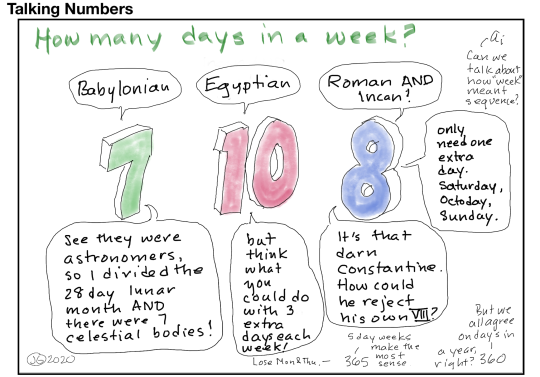
What a Week
I’ve been making these goofy mathcomics, and was asked to submit one to a journal, so I thought it was time to have a title and sign them.
Would you rather have off 2 days every 7 or 1 day every 5?
But who gets 2 days off any more?
2 notes
·
View notes
Photo
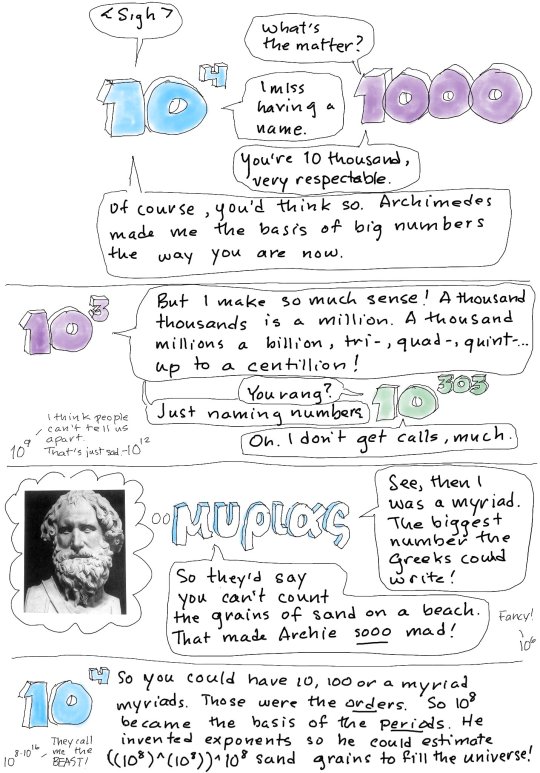
How Big?
In grad school, Richard Garfield came up with a nice intuitive number classifying system. A big number is obvious - does it feel like a big number. If the number of digits was a big number, that number was really big. And if the number of digits of the number of digits was a big number, then it was... really, really big.
Avagadro’s number is big.
Graham’s number is really big.
The Beast number could be really, really big. What do you think?
1 note
·
View note
Photo

Hypatia of Alexandria was a neoplatonic mathematician and scholar who was well respected for her council and teaching. She was tragically murdered by a Christian religious mob for being a pagan. #procreate #digitalart #digitaldrawing #digitalsketch #womenshistorymonth #hypatia #mathhistory #ancienthistory https://www.instagram.com/p/B-VWn3MDZ5M/?igshid=yqbr8bp60ity
#procreate#digitalart#digitaldrawing#digitalsketch#womenshistorymonth#hypatia#mathhistory#ancienthistory
0 notes
Photo
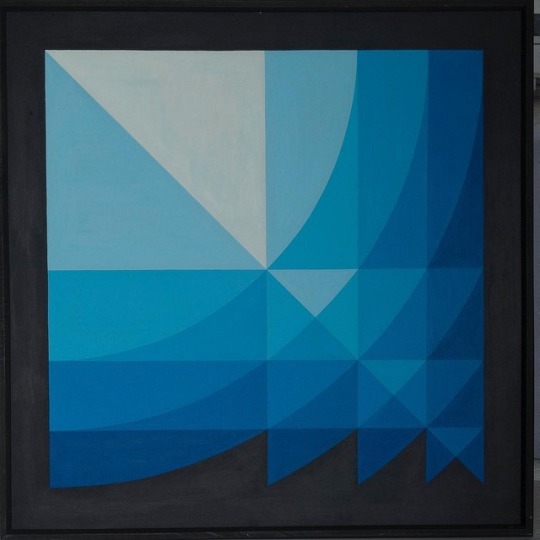
Those refreshing blues! We could just dive in. Illustrator of "Harold and the Purple Crayon" Crockett Johnson, like many Americans, was inspired by the allure of the space age of the 1960s and developed an interest in mathematics and science. From 1965 until his death in 1975 Crockett Johnson painted over 100 works relating to mathematics and mathematical physics. Of these paintings, 80 are in our collection. This one is titled "Squares of 1, 2, 3, 4 and Square Roots to 8." This oil painting on masonite is not signed and its date of completion is unknown. #BeautifulBlues #MathHistory #Swimming #Painting #BreakForArt #AmericanHistory http://ift.tt/2wj3iDT
0 notes
Photo
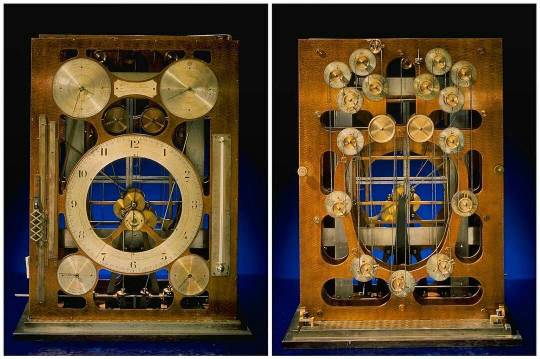
From @amhistorymuseum - This is a tide predictor, designed in 1880. It's an in our Science and Math collection. 🌊 In 1872, the British physicist William Thomson (later Lord Kelvin) devised a machine to simulate mechanically the combination of periodic motions that produce tides. ➗ Inspired by this example, William Ferrel of the U.S. Coast and Geodetic Survey designed a tide predictor and had it built by the Washington, D.C., firm of Fauth and Company. This elegant machine was more compact than that of Thomson, and gave maxima and minima rather than a continuous curve as output. 🏝 It went into service in 1883 and remained in use until 1910. The success of Ferrel's tide predictor suggested the feasibility of replacing calculations performed by people with computation by machines. ⛵️ We predict you'll have a happy Hump Day, Instagram friends! #MathHistory #Tidal #MaritimeHistory #Steampunk #TheTideIsHighButImHoldingOn @noaa - #regrann http://ift.tt/2ifOrlg
0 notes
Text
1.1 History of technology in Math
Slide rule

The rectangular slide rule was invented in 1620 and the circular slide rule in 1632. A slide rule has three parts; the body, the slide, and the cursor. Scales mark the body and slide. The cursor has a hairline that facilitates accurate positioning of the cursor at a specific point on some scale. The slide rule can be used for basic multiplication and division and even to calculate quadratic equations. (http://www.math.utah.edu/~pa/sliderules/)
Calculator-

In the past calculators were not as user friendly as they are now. They resembled a typewriter and would print out the answers to what you put into the machine. (http://www.cs.laurentian.ca/jdompierre/html/calculatrices/index.html)
Abacus

The abacus existed even before written numbers. It was used to count and was very prevalent in trading markets to do everyday calculations. It made doing simple math with large numbers very easy. (http://www.ee.ryerson.ca/~elf/abacus/history.html)
Protractor
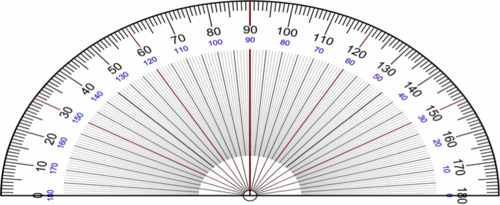
A Protractors is an instrument used to measure and create an angle. The protractor is over 500 years old. In the 17th Century the protractor was used to navigate in the sea. (http://americanhistory.si.edu/collections/object-groups/protractors)
Compass-

The compass was invented by Galileo and was originally used in making military maps proportional. The proportional compass was used by all engineers and architects until the recent boom of computers. (http://brunelleschi.imss.fi.it/esplora/compasso/dswmedia/storia/estoria1_st.html)
0 notes
Photo
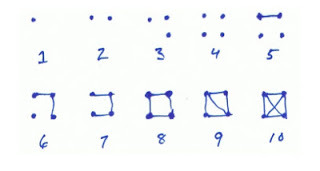
History of Tally Marks
Love this post by Pat Ballew, with a quite thorough overview. This system is called the Tukey Tally, but dates back much farther to lumber workers.
3 notes
·
View notes